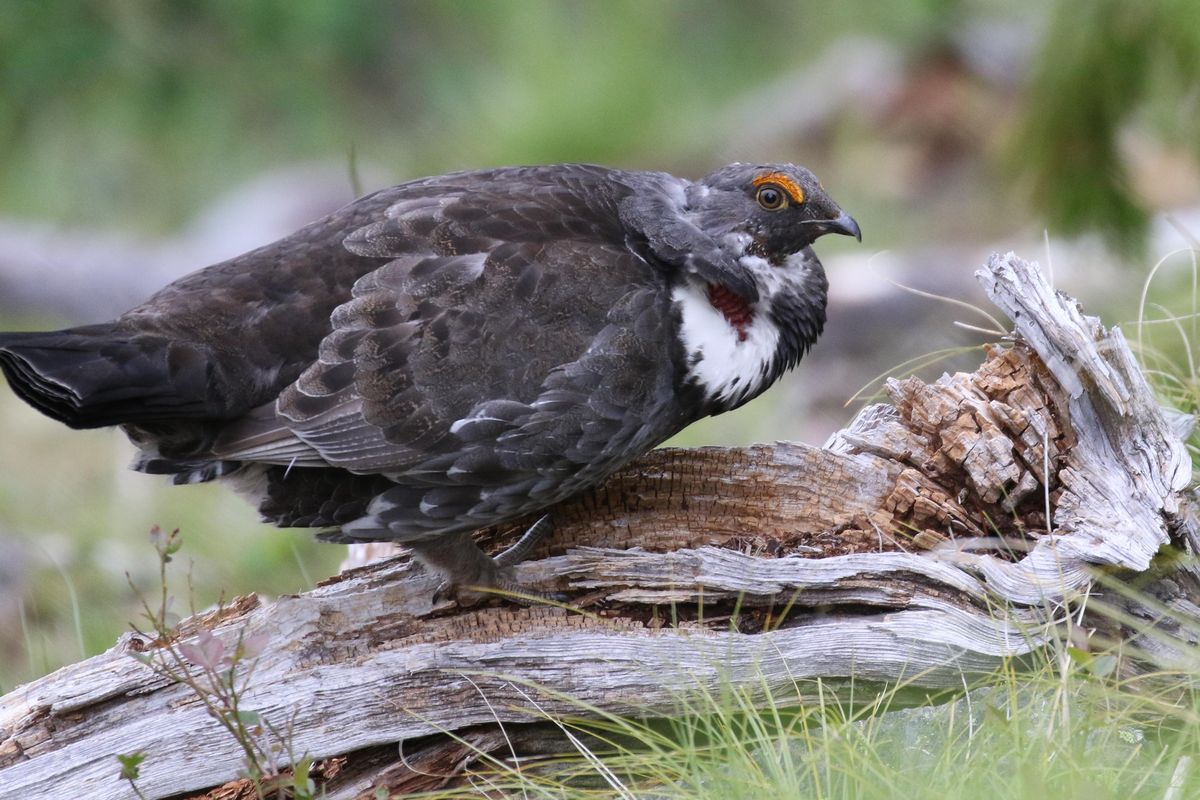Spokane man tallies 146 bird species in Pend Oreille County in a big birding day for the books

By the time midnight rolled around on June 26, Michael Woodruff was out of bed and in the woods listening intently in the morning darkness.
“I like being up to the middle of the night and just kind of watching the day dawn,” the 29-year-old resident physician at Sacred Heart Medical Center said. “For half an hour or so you can’t see anything but you can rack up quite a list just by listening.”
That predawn attention was only the beginning.
Woodruff and his friend Christopher Lindsey spent nearly 24 hours searching for birds in Pend Oreille County that day. In the process they documented 146 distinct species breaking a 2007 record of 133 species, held by Woodruff and Gina Sheridan.
That kind of marathon birding session is “one of the funnest parts of birding,” he said.
Woodruff holds numerous records, the most notable being the record for the most birds counted in a year and the most birds in a day in San Bernardino, California. Woodruff broke both those records while in medical school.
“Breaking a record in almost any county in California is an amazing feat,” said Jon Isacoff, an avid birder himself and an environmental studies professor at Gonzaga University.
In addition to the time commitment, big birding days take planning and preparation.
“You want to have a game plan,” Isacoff said.
That includes scouting the area you’re birding ahead of time and planning a route that will maximize the chances of seeing different types of species.
“It can become quite elaborate,” Isacoff said. “It’s very similar to the Bass Master tournaments.”
Woodruff added, “You have to know the county. You have to now the niches because so many birds have really specific small habits. So you have to plan a route that maximizes all of that.”

He and Lindsey started east of Deer Valley, where they heard a flammulated owl. They also had a “bull moose lunge in front of our headlights sometime before 1 a.m. before running ahead of us along the logging road.”
For the next several hours, they continued listening for owls, tallying a northern saw-whet and a great horned owl. From there the duo went west to the Horseshoe Lake area, where they tallied a common nighthawk east of Fan Lake.
As dawn broke, the morning birds started to appear and their list ballooned with warblers, wrens, American redstarts, pileated woodpeckers and more.
Eventually they headed north to the Davis Lake marsh where they heard and saw sora and Virginia rail, a blue-winged teal and a solo Cooper’s hawk.
By noon, they had 119 species and were near the Pend Oreille River by Cusick, Wash.
“Along the dike road on the Kalispel Reservation, a few Lewis’s woodpeckers were easily seen at the dead aspens mid-way along,” Woodruff wrote in an email. “Our only kestrel of the day flew by. A least flycatcher (reported over the weekend to eBird) was at the 90 degree turn at the north end, where one was seen last year as well.”
From there they headed to the Salmo Mountain area, where they started seeing and hearing American three-toed woodpeckers. By 4 p.m. they’d broken the record with a “beautiful male Townsend’s warbler.”
“Salmo Mountain is such an incredible place to spend some time,” Woodruff said.
They finished their day at Big Meadow Lake, west of Ione, Wash. Heavy cloud cover made the evening particularly dark. Their day ended at 11:15 p.m.
Woodruff, who has been birding since he was 9 years old, loves the accessibility of birding, “anytime we stop the car I can make a short list of birds.”
But, beyond the joy it brings, birders like Woodruff provide reams of data to scientists and conservationists.
After a big day, like the one he had in June, Woodruff reports his findings to eBird, a website run by the Cornell Lab of Ornithology.
Woodruff’s data, alongside that of roughly 400,000 other birders, is sorted and examined by scientists at Cornell. The data collected by eBird users since the service started in 2002 is considered the largest citizen-science effort ever.
That data has been used to create detailed maps predicting when and to where birds will fly. Recently, that information was used to create safe havens for migrating birds in California, the Washington Post reported. Farmers left water on their fields for longer giving the birds “rest stops.”
With 40% of the world’s bird species in decline, according to the 2018 State of the World’s Birds report, that’s important information for scientists, conservationists and land managers to have.
It helps the birders out, too.
“eBird has made everything so much more connected,” Woodruff, who started using eBird in 2003, said in an email. “You can, in real time, see where everyone has been birding and can specifically target birds so much better than you used to by looking at a map and all the locations where you might find a species, and how likely. You can get news alerts where you get an email every time birds you haven’t seen yet are reported in a particular county or state.”
He added, “It’s very fun and now it’s hard to remember birding without it. I think it has also encouraged a large number of tech-oriented people to be more serious about birding.”